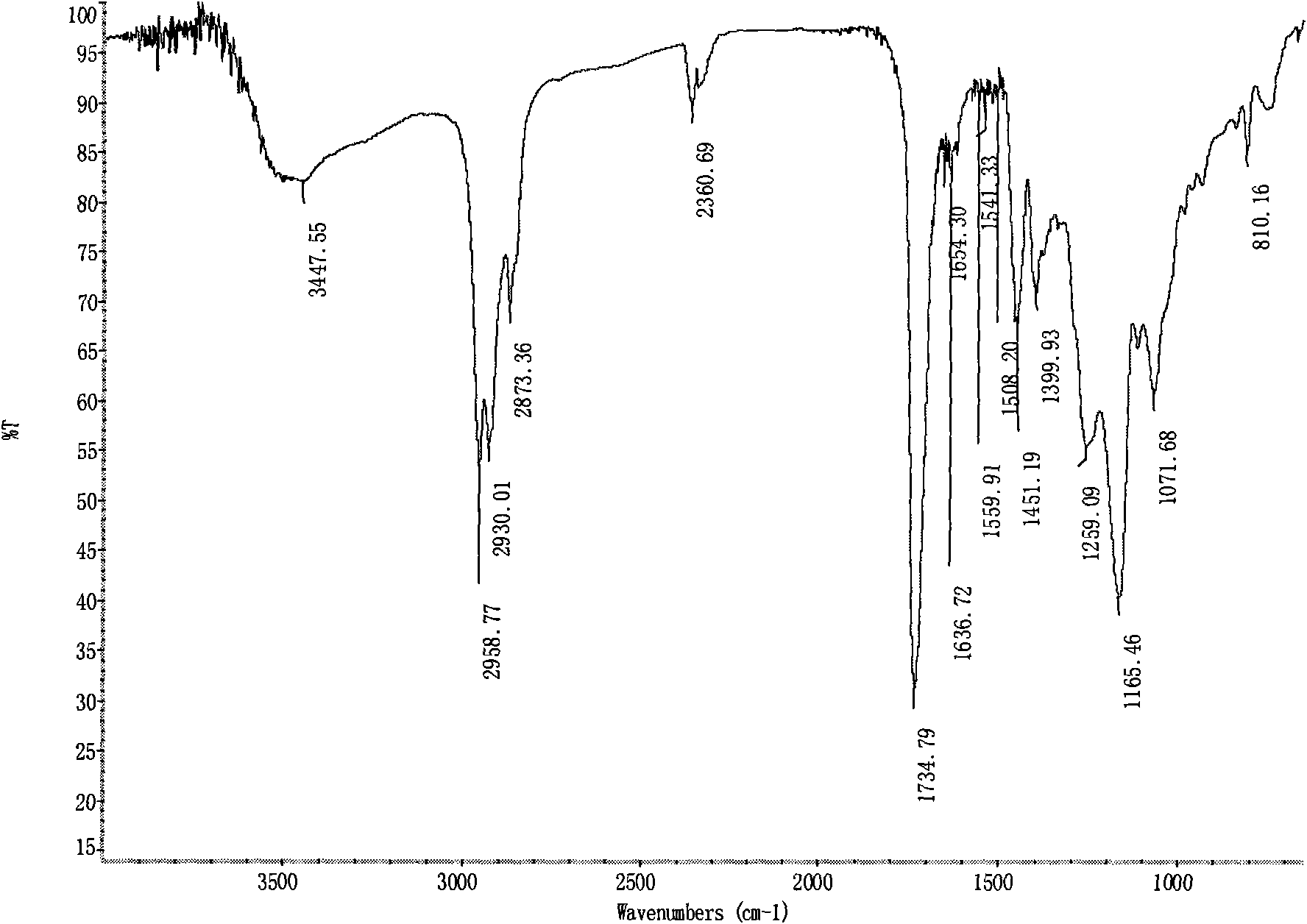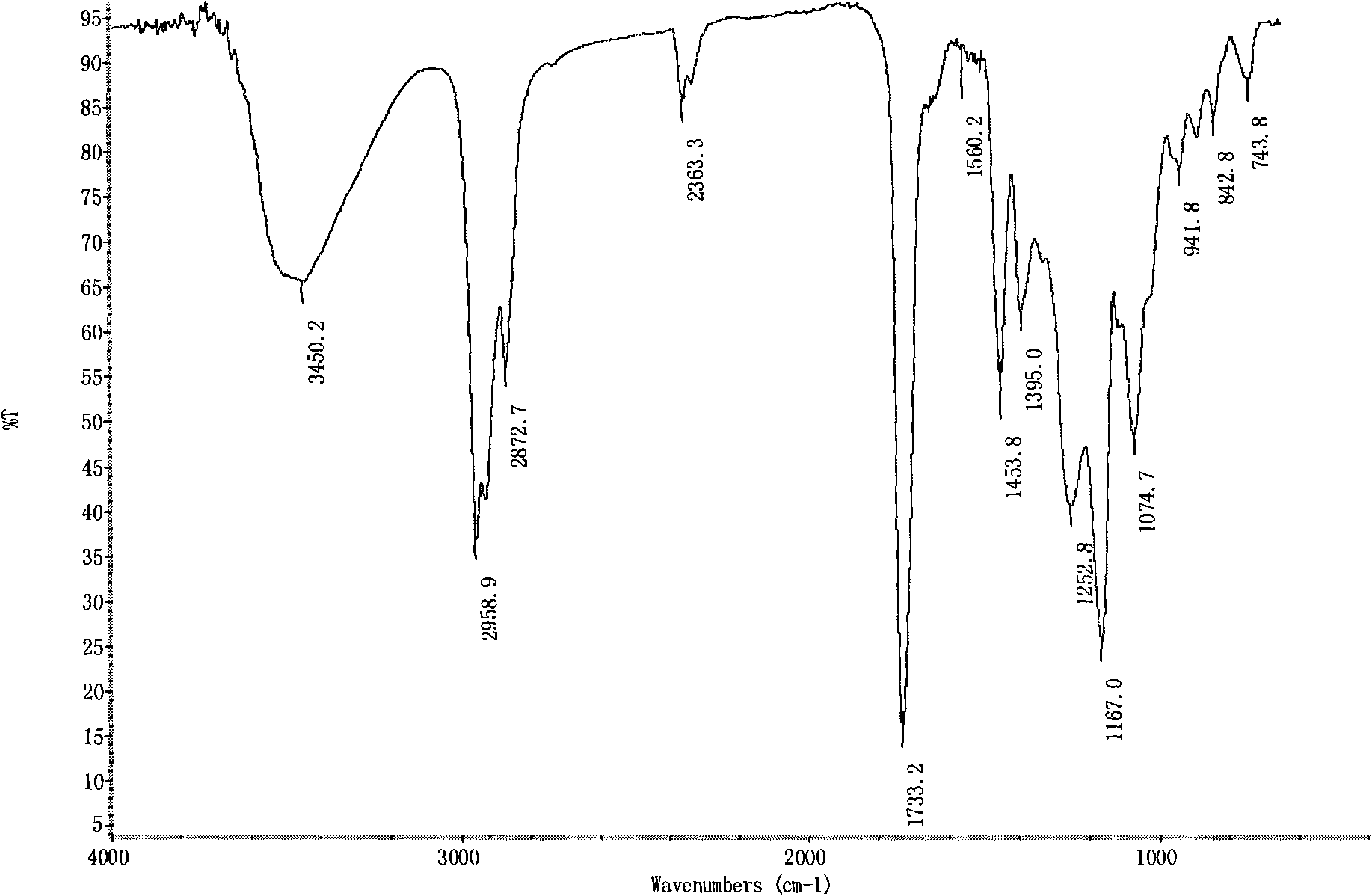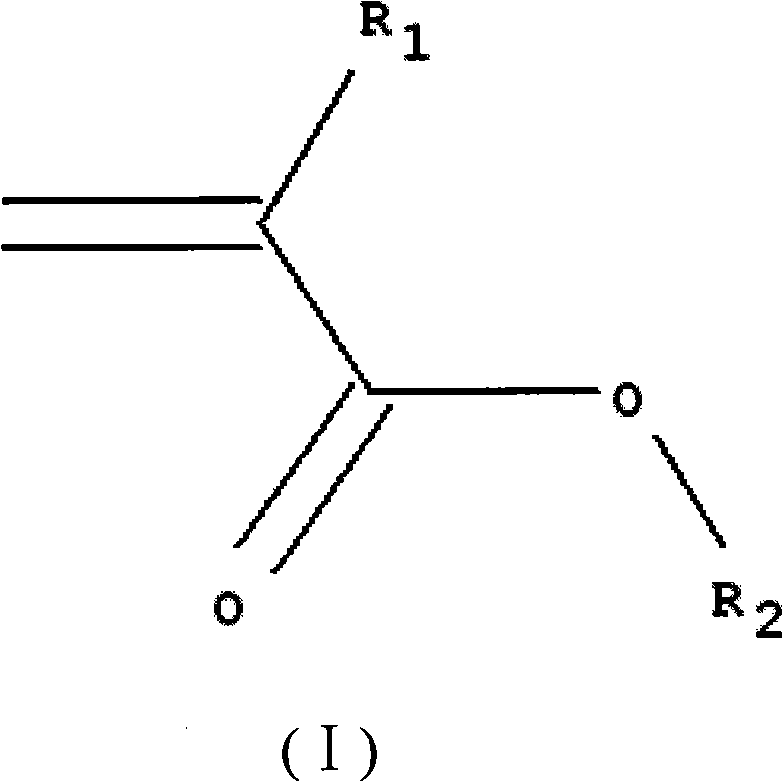Preparation method of low molecular weight polyacrylic ester acrylic ester for photo-curing
A polyacrylate, low-molecular-weight technology, applied in the direction of coating, etc., can solve the problems that oligomers cannot be used alone, hinder application, and have high viscosity
- Summary
- Abstract
- Description
- Claims
- Application Information
AI Technical Summary
Problems solved by technology
Method used
Image
Examples
Embodiment 1
[0030] (1) in the reactor that condensing device is housed, stirring device, adding monomer molar ratio is 1.1: 1 methyl acrylate and hydroxyethyl acrylate, add azobisisobutyronitrile (monomer mole percent 1.5%), n-dodecyl mercaptan (monomer molar percentage 2%), solvent ethylene glycol monomethyl ether (monomer mass 120%), stir and heat up to 55°C, fully dissolve for half an hour, and then heat up to 74°C Carry out the reaction until the temperature automatically rises and stop heating, and the reaction ends when the temperature begins to fall back. When the temperature drops to normal temperature, add distilled water with a solvent mass ratio of 100%, and stratification occurs. After the stratification is stable, filter off the supernatant to obtain a white opaque resin. After washing with water three times, put the resin in a vacuum oven at 70°C Dry overnight to remove the remaining moisture to obtain the product poly-hydroxyethyl acrylate-methyl acrylate, the appearance is...
Embodiment 2
[0036] Methyl methacrylate and hydroxyethyl methacrylate are charged according to the monomer molar ratio of 1.1:1, and azobisisobutyronitrile (monomer molar percentage 0.5%), n-dodecanethiol (monomer molar percentage 2.0%) are added ), solvent ethyl acetate (monomer mass 100%), all the other heating and aftertreatment are with embodiment 1, and the product obtained is slightly yellow transparent resin, GPC test number average molecular weight Mn=7412, molecular weight polydispersity PDI=3.1.
[0037] Add 0.25wt% p-toluenesulfonic acid accounting for acrylic acid weight, 0.3wt% hydroquinone accounting for acrylic acid weight in the second step reaction, solvent adopts toluene, react at 124 ℃ for 2.2 hours, all the other conditions are the same as embodiment 1. The conversion rate was 90%.
[0038] Test the properties of the cured film on the tin plate, the gloss is 100Gs, the flexibility is grade 7, the adhesion is 84%, and the adhesion on PE is 75%.
Embodiment 3
[0040] (1) The ratio of ethyl acrylate to hydroxyethyl acrylate monomer is 1.2:1, add azobisisobutyronitrile (monomer molar percentage 5%), n-dodecanethiol (monomer molar percentage 2.0%), The solvent was ethyl acetate (monomer mass 400%), and the rest of the heating and post-treatment were the same as in Example 1. The product obtained was a light yellow transparent resin with a number-average molecular weight of Mn=2916 and a molecular weight polydispersity of PDI=3.2 by GPC.
[0041] In the second step reaction, add p-toluenesulfonic acid accounting for 5wt% of acrylic acid weight, hydroquinone accounting for 0.3wt% of acrylic acid weight, using toluene as a solvent, and reacting at 124° C. for 2.5 hours, and all the other conditions are the same as in Example 1. The conversion rate was 80%.
[0042] Test the properties of the cured film on the tin plate, the gloss is 100Gs, the flexibility is grade 7, the adhesion is 84%, and the adhesion on PE is 75%.
PUM
| Property | Measurement | Unit |
|---|---|---|
| gloss | aaaaa | aaaaa |
| gloss | aaaaa | aaaaa |
| gloss | aaaaa | aaaaa |
Abstract
Description
Claims
Application Information
 Login to View More
Login to View More - R&D
- Intellectual Property
- Life Sciences
- Materials
- Tech Scout
- Unparalleled Data Quality
- Higher Quality Content
- 60% Fewer Hallucinations
Browse by: Latest US Patents, China's latest patents, Technical Efficacy Thesaurus, Application Domain, Technology Topic, Popular Technical Reports.
© 2025 PatSnap. All rights reserved.Legal|Privacy policy|Modern Slavery Act Transparency Statement|Sitemap|About US| Contact US: help@patsnap.com



